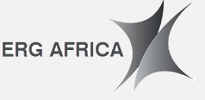Publication: Mining Weekly
Date: 6 December 2019
Author: Mamaili Mamaila
STRENGTH TO STRENGTH Eurasian Resources Group foresees persistent strong growth, underpinned by global population increases, urbanisation and rising living standards.
The Central African Copperbelt offers some of the most attractive deposits worldwide, says diversified resources producer Eurasian Resources Group (ERG) CEO Benedikt Sobotka, adding that most investors are bullish on copper’s long-term fundamentals.
“According to mining research and consultancy group Wood Mackenzie, the Democratic Republic of Congo’s (DRC’s) mined copper grades averaged 2.33% in 2018, against a global average of just 0.76%.
“The region’s mined copper output more than doubled from 800 000 t in 2008 to 2.2-million tonnes in 2018, representing a compound annual growth rate of 10.4%, compared with a global average of only 2.9%.”
The Copperbelt is also home to the largest cobalt deposits in the world, accounting for about 50% of the world’s cobalt resources, he tells Mining Weekly.
Sobotka notes that, consequently, the region’s high-quality mineral resources typically foster a simple, often-seen proposition – the development of small-scale investments to develop concentrators or other processing facilities, fed by local artisanal material.
He suggests that, to truly benefit from these vast resources, countries must foster long-term, sustainable mining industries. “Large-scale investments by international companies often have a multiplier effect in local economies. “There are direct impacts, such as the capital investment to develop infrastructure and processing facilities, the hiring of local labour, as well as supporting communities through training and the construction of schools, hospitals and dwellings,” he says.
There are also indirect impacts, including broader economic development stemming from improved infrastructure and job creation through the development of local contractors, as well as tax revenues that support fiscal budgets and associated development initiatives.
Sobotka adds that implementing international best practice ensures sustainable social development and environmental monitoring and rehabilitation, thereby perpetuating the aforementioned benefits.
“Importantly, large-scale mining investments typically have high upfront capital requirements, with a return of capital over several years, and are subject to the long-term uncertainty and cyclicality of commodity markets. Given this reality, operational, legal and fiscal frameworks must be clear and stable to reduce the risks to capital, thereby attracting and fostering large-scale investments.”
Another considerable challenge in the broader Copperbelt region, he states, is the availability and stability of power supply. Addressing this will require long-term investment in power generation capabilities and in the transmission grids in and across countries to leverage the broader regional power matrix. “This should also embrace public–private partnerships and cross-border cooperation.”
Eurasian Resources Group’s cooperation agreement with Société Nationale d’Électricité (SNEL) for the guaranteed supply of electricity to its Frontier Mine in the DRC is an example of a cross-border agreement which could serve as a model for further cooperation between the private and public sectors in Central Africa.
Supply and Demand
While copper prices have been held captive by the uncertainty surrounding the US-China trade war which has been going on for over a year, copper’s fundamentals remain healthy and there is limited evidence of any direct impact of the trade conflict on copper consumption, says Sobotka.
“As we head into 2020, we expect a pronounced market deficit, which will be driven by weak supply growth, caused by few new additions to mine capacity, a heightened risk of disruptions and interrupted scrap metal flows.”
He tells Mining Weekly that, with tangible signs of the US-China trade conflict drawing to a close, 2020 could prove to be a “bumper year” for copper prices.
He predicts that, in the long-term, copper offers exceptionally supportive fundamentals, as supply growth will be unable to keep up with demand. “The prolonged period of curtailed investment in long-term mine supply during the 2011 to 2016 price decline has led to a substantial thinning of the project pipeline, which is already being felt. The underinvestment is amplified by the growing complexity of mine projects, which are facing increasing technical, environmental, social and political challenges.”
On the demand side, ERG foresees persistent strong growth, underpinned by global population increases, urbanisation and rising living standards. Accompanying these trends is a growing awareness of the need to ensure environmental sustainability, which is driving rapid growth in demand for green energy and transportation, Sobotka comments.
“Copper is central to this trend, as it is used heavily in the production of electric motors, generators, batteries and the associated wiring and cabling. Additionally, we expect significant support for copper consumption from the vast infrastructure projects associated with China’s Belt and Road Initiative, particularly in Eurasia and Africa,” he adds.
Responsibility Underpins Sustainability
The responsible sourcing of key metals, including copper, is at the centre of the vision of the World Economic Forum’s public–private coalition the Global Battery Alliance, which is committed to responsible mining practices and promoting human rights.
ERG is a founding member of the Alliance and Sobotka is a co-chairperson. A recent report by the Alliance found that lithium-ion batteries can create significant socioeconomic benefits by 2030, including lowering global transport and power emissions by 30% and supporting several desired outcomes of the United Nations Sustainable Development Goals and Paris Agreement targets.
“Ensuring that the value chains for key metals, including copper, are sustainably scaled up to service increasing battery demand can support these efforts. This includes ethical sourcing and addressing issues of supply traceability,” Sobotka says.
He highlights that ethical sourcing and supply traceability are critical, although he stresses that this is a less significant issue for copper, when compared with other commodities in the region, especially cobalt.
This is primarily because the economics of mining copper using artisanal methods are typically much worse than that of a commodity such as cobalt, which on average contains more value per weight unit.
“Copper mining is much better suited to large-scale, fully mechanised operations.”
ERG produces copper in Central Africa through Metalkol RTR and Frontier Mine, both in the DRC. The company also owns the Chambishi Metals copper/cobalt refinery, in Zambia.
